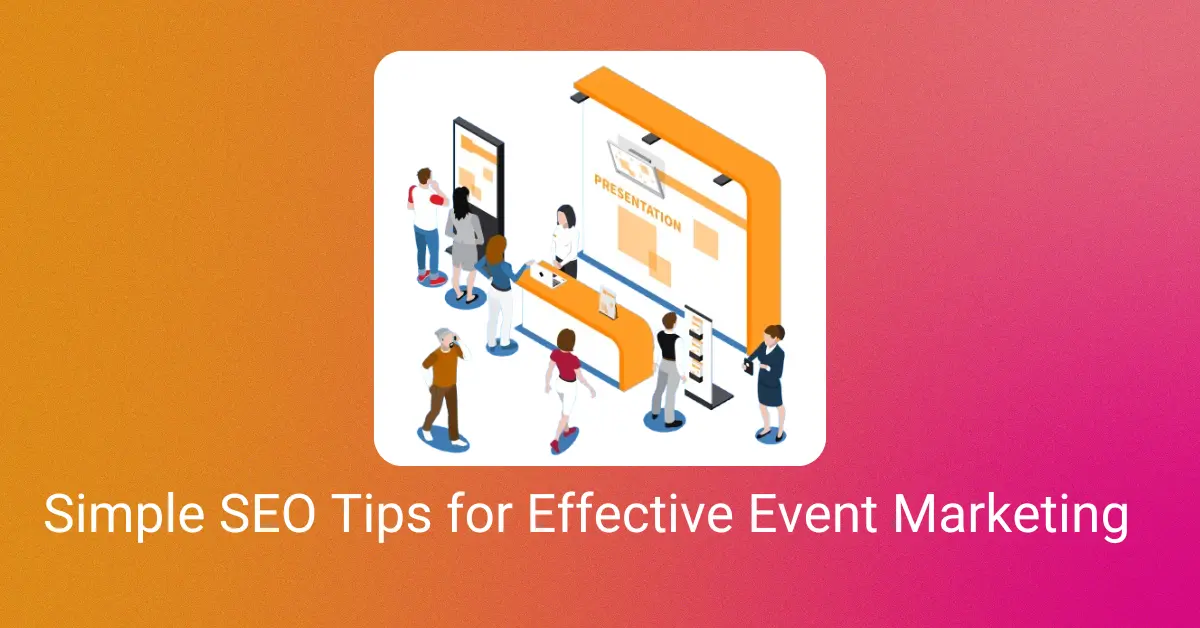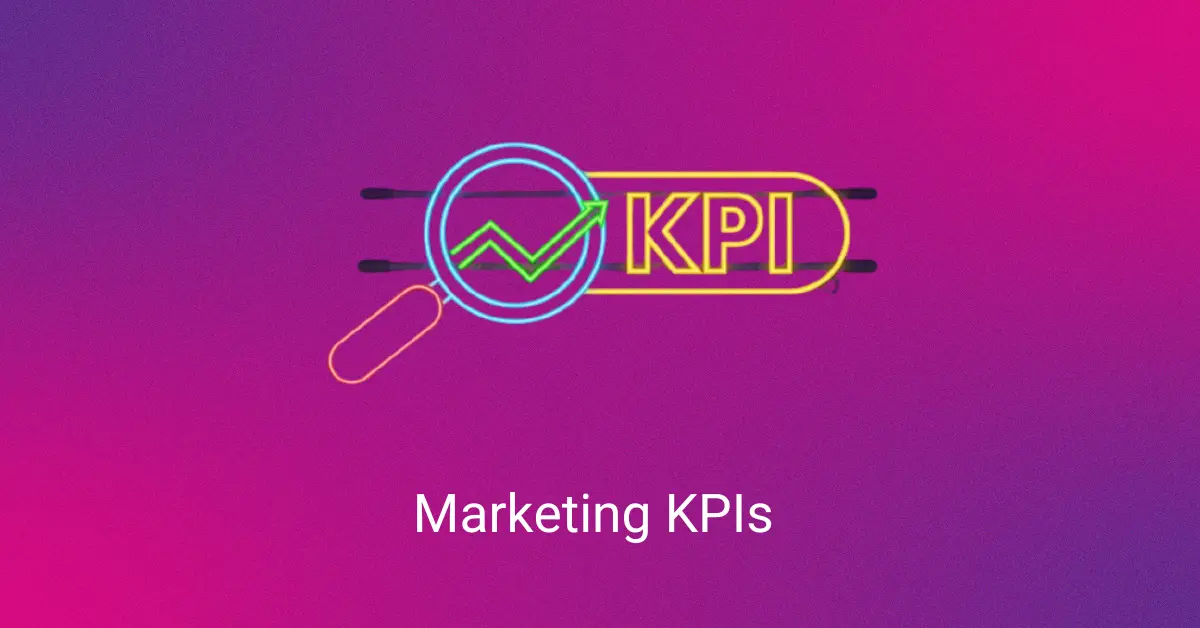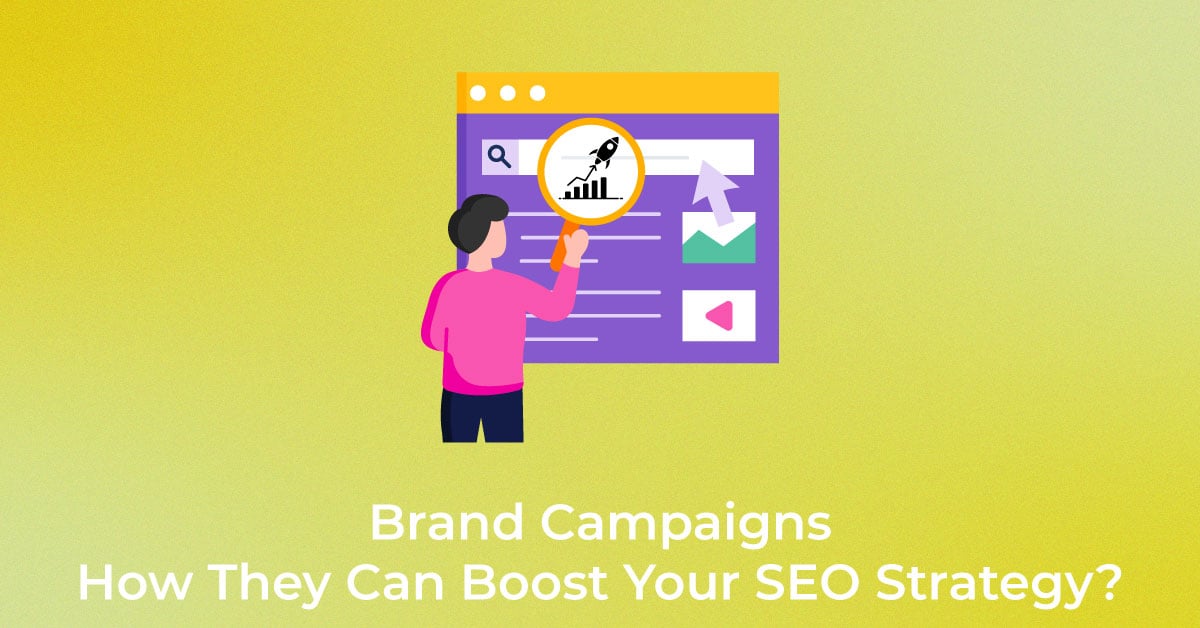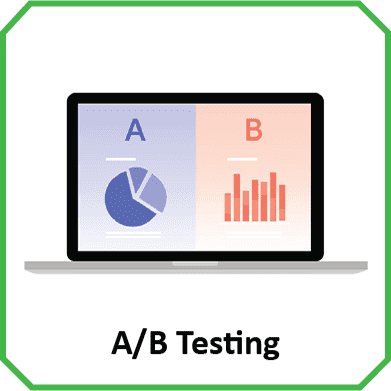When any marketer advertises services or products through a landing page, email marketing, targeted ads, and so on, it is imperative that they know whether their audience would like it or not. It can be quite tempting for many to base these marketing strategies on intuition or predictions, but that is not enough to ensure conversions from the target audience.
Marketers and businesses, therefore, rely on A/B testing or split testing to create content that resonates with their target audience. But what is A/B testing and how does it work? Let us find out.
What is A/B Testing?
Also known as split testing, A/B testing is a carefully crafted marketing experiment that splits up your target audience into various groups to test variations of your marketing material on them. Each group provides valuable insights—both positive and negative—about how well your marketing content clicked with them. This helps you determine which variations have the potential to perform better than the others.
You can use A/B testing to weed out the marketing material that does not resonate well with your target audience. This ensures that your campaigns bring in the best leads with the most potential to convert.
How A/B Testing Works
Running an A/B test is quite easy. You just need to focus on splitting your audience into two groups or more and creating unique versions of the campaign content for each group.
Once you have created different pieces of content with the same goal for each group, show it to the audience. Then, watch their reactions. The version that performs the best over a defined period of time (this duration should be long enough to enable you to make accurate conclusions about the individual versions) is usually the one that is chosen to be used.
Why Should You A/B Test?
There are several reasons why businesses should use A/B testing. These range from finding the best material to market to eliminating the content that resonates least with the users.
A/B testing helps you refine, or even redefine your user experience to reap instant benefits. This is accomplished through collecting data from the users, generating insights from this data, finding areas that need improvement, and putting all this information into action.
The data collected from A/B testing is the most efficient way to generate constructive hypotheses about user experiences. This helps businesses visualize customer journeys and learn how each element of the user experience impacts their behaviour, clicks, and decisions. Additionally, it helps businesses figure out more effective ways in which they can reach their desired goals.
No marketing strategies are perfect, and always have room for some growth. A/B testing can be put to work regularly to find out how you can improve your outcomes, and improve upon particular goals like conversion rates, or collective goals like reaching a certain revenue figure.
For instance, a B2B business named “X” in the technology domain wants to improve the quality of their sales leads through their landing page campaign. In order to reach this goal, X would have to test multiple headlines, copies, visuals, forms, page layout, and call to action prompts to find out which ones are generating the most engagement. A/B testing can help X figure out exactly what is clicking the most with their very niche target from their entire audience base to ensure that goals are achieved. A/B testing can help them implement changes one at a time in their campaign based on user behaviour. Over time, these changes will generate very visible results, and the goal will soon be much more achievable.
What are the elements that you can A/B test?
1. Headlines and Copywriting
The first thing a visitor sees on visiting a landing page is the headline. Headlines have to be catchy and enticing enough so that visitors feel like reading the remaining material on the page. It is imperative that you test multiple versions of headlines to choose the most effective one. Crisp and to-the-point copywriting is the best way to capture your visitors’ attention.
2. Call to Action (CTA)
A call to action determines whether a lead will convert or not. Every single word in a CTA can make a difference in improving or reducing your conversion rate. Make sure your CTAs are short, to the point, and convey what the visitor will take away on taking the action in the CTA.
3. Image, audio, and video
Omnichannel marketing has become one of the fastest-growing forms of consumer marketing. Images, videos, and audio have proven to be very effective in converting leads. Continuous A/B testing of your images or video marketing materials to ensure they are effective and are helping you achieve your goals is critical, as they are often the most consumed forms of media.
4. Subject lines
Email marketing entails many factors, the most important of which is the subject line. If you want a user to open a marketing email and not mark it as spam or put it in the trash, make sure that your subject line is attractive and effectively conveys your messaging. A/B testing multiple subject lines can improve click rates and ensure that more recipients open your emails.
5. Content depth
There can be a major difference in the requirements of your target audience. Split them up into groups and A/B test which segments of your target audience prefer in-depth content, and which ones prefer short, basic overviews. This will help you channel the right type of marketing content towards the relevant segment, with the preferred content depth.
6. Product description
Short and precise product descriptions have proven to be very effective in the eCommerce industry. Easily digestible content, which provides the relevant highlights and gives a proper overview of the product is the way to go. A/B tests should use different approaches of highlights, overviews, product details, and so on to see which one appeals the most to your consumers.
7. Social proof
Over 70% of the consumers prefer to see the opinions of other consumers before investing in a service or a product. Social proof has become the best way to ensure that users are given enough motivation to convert. A/B testing different types of social proofs like star ratings, testimonials, reviews, and so on, can help you determine which type of social proof is generating the best results on your landing pages.
8. Email marketing
It is very easy to A/B test your email marketing material. Just send version A to half of your recipients and version B to the other half. You can very easily determine which version is bringing in the best results.
9. Media mentions
Mentions in different media channels have always proven to be a great endorsement of trust for users. A//B test different types of quote designs, testimonials, reviews, and so on received by your business from various media channels. Check which ones have had the most impact on your target audience. For instance, test if the mention credited to the media channel in text works better than the mention credited to the channel with its logo.
10. Landing pages
One of the main purposes of a landing page is to convert visitors to loyal customers. You can use various approaches like checking the heat map of the page to see which areas generate the most clicks on your pages. This can help you A/B test your landing pages with different designs, copies, and so on, to improve the click-through rates (CTR).
11. Navigation
Website navigation is a key element in determining user experience. Make sure that your website is easy to navigate. This alone can help reduce bounce rates. A/B test which approaches work better. For instance, is the menu bar most effective when placed at the top or does it work best when placed at the side?
12. Design and layout
A/B test which types of page designs and layouts keep the visitors to your website most interested. This can be easily tracked by checking the bounce rates on each design and layout.
A/B Testing Process
To utilize A/B tests to their full potential, you need to follow certain steps. Here is the step-by-step process for A/B testing:
1. Collect data
The analytics tool you use will provide you with the most relevant insights about your user behaviour. Collect all the data and optimize it to find the most relevant insights. One good approach is to focus on the specific pages in your website that generate the most traffic. This approach will help you gather the most relevant data faster. It will also help you identify the necessary improvements for pages that have high bounce rates or low conversion rates.
2. Identify your conversion goals
The metric that you use to determine whether your variations have the impact they need to usually revolves around conversion rates. Identify your conversion goals, whether they are clicks on CTA buttons or purchases or signups. This will help you determine whether your efforts are bringing in the results you aimed for.
3. Generate a hypothesis
Once you have a grasp on your conversion goals, you can start working on ideating for different A/B testing hypotheses, based on why you believe they would reap better results than current versions. These ideas can then be prioritized based on the data collected and can help you determine which ones can generate more impact.
4. Create variation
Using A/B testing tools, you can create variations based on your ideas. These variations can range from changing the colour of the CTA buttons to customizing user experiences, changing certain elements on the website pages, and so on. Using visual editor tools, you can easily implement these changes on your website.
5. Experiment
Once you have addressed all the above points, it is time to experiment with the variations. Assign random or targeted variations to your visitors, and keep a close eye on how each of them performs. The interactions of each visitor with the variation should be measured and compared to determine which variations are working the best.
6. Analyze the result
Use the A/B testing tool to compile all the data from your experiment stage to see the difference between the variations. If there is a significant difference in their performance, you can gain valuable insights about user behaviour by analyzing why one version is performing better than the other.
Different Types of A/B Testing
1. Split URL testing
Unlike normal A/B testing, split URL testing is used to test completely new versions of the Web page. Split URL tests help to check whether making significant changes to Web pages in terms of design and layout is worth it. The existing Web page is not interfered with for comparison purposes.
The website traffic in split URL tests is split between the original URL and variations of the URL. Each URL’s conversion rates and other relevant metrics are closely observed and tracked to determine the winner.
2. Multivariate testing (MVT)
Multivariate testing (MVT) takes a more experimental approach towards A/B testing. In this method, the multiple variables of pages and their variations are tested simultaneously to continually analyze which combinations of the page variables are performing the best. This is a more complicated approach to A/B testing, as it continuously analyzes various permutations of page variables. MVT is best suited for businesses that are into advanced marketing, product development, and research.
3. Multipage testing
In multipage testing, you test the changes to targeted elements across multiple pages or even across your entire website. It can be conducted in two ways:
- Funnel Multipage Testing – Collect all the pages of your website in the sales funnel. Then create new versions for each of these pages. This makes the original pages the challenger. You can test these versions against the control, and determine which one is bringing in the best results.
- Conventional Multipage Testing –- This approach focuses on-page elements. You can test the impact of adding or removing certain elements like testimonials, ads, security badges, and so on. You can see how it impacts conversion rates across the entire website.
A/B Testing and SEO
There are many implications of SEO that are concerned with ethical A/B testing. Google makes it clear that websites must follow certain rules while conducting A/B testing to ensure that no unethical methods are used to gain results. Here is what you need to keep in mind while A/B testing to support your SEO:
-
Do not use cloaking while testing your pages
Cloaking is a method in which one set of content is displayed to humans while a completely different set is shown to Googlebot. This is strictly against the Webmaster Guidelines and can result in penalties from Google. These penalties can include demotion of your website, lowering of search engine page result (SERP) rankings, or even complete removal from SERPs.
-
Use 302 Redirects carefully
You should only use 302 (temporary) redirects if you are running A/B tests that involve redirecting the users to a variation of the original URL. Do not use 301 (permanent) redirects for this. This approach ensures that the search engines are aware that the redirects are only temporary, and will only exist till you are running the test. This also helps in ensuring that the search engines store your original URL in their index as opposed to replacing them with the redirect URLs.
-
Only Use rel=”canonical” links
If you are using any link attributes on the alternate URLs for pages, Google’s advise is to use rel=”canonical” links. This helps you indicate to the Googlebot that the original URL of the page is still the preferred one.
Using approaches like no index meta tags cannot convey your intent to Google. For example, if you have created multiple A/B testing variations of a product page, then you would not want Google to miss out on indexing the main product page. Other approaches are not as effective as attributing rel=”canonical” links to pages that you do not want to be indexed. This helps Googlebot understand that these pages are variations or duplicates of the original product page and that they should all be grouped together, with the original URL being at the forefront.
-
A/B test or experiment for suitable durations
While the duration an A/B test should run for depends on the factors you are focusing on, you should be aware of the appropriate duration of the test. If you are using a good A/B testing tool, you would be able to gather enough data in a certain amount of time to draw accurate conclusions from the test. Once you have reached this stage, you should remove all the elements and variations of the test and use your desired variation. Elements like testing scripts, alternate URLs, and markups should be removed to refine your SEO.
Mistakes to Avoid While Doing A/B Testing
A/B testing demands a high level of patience and planning. Many businesses that only have half-baked ideas and no established goals miss out on the planning aspect of A/B testing. There are many mistakes you can unknowingly make while performing A/B tests. Here are the most common ones that you should avoid:
1. Not having a roadmap
Not having a hypothesis before planning your A/B testing can prove to be counterproductive. To formulate variations, you must know what you want to achieve through the tests. Additionally, copying someone else’s roadmap might prove to be unsuccessful too. For instance, if a competitor gained a 25% uptick in their conversions by making a change on their landing page, it is completely unique to their website and visitors. Just because that change worked for them does not mean it will for you too, since your website is unique to your own brand voice.
2. Clubbing up too many elements into one A/B test
It can become very confusing to point out which element is affecting your results positively and/or negatively if you bundle too many of them into a single A/B test. Use different split tests for different elements to ensure that you find out which ones need to be optimized and which ones are already generating good results for you.
3. Unbalanced traffic distribution
A/B testing should have a very organized and balanced distribution of traffic to gain the insights you are looking for. Allotting lower traffic to certain variations can give you results that most likely would not give you the insights you were looking for from the test. Your A/B testing campaign should not fail or bring inconclusive results. o avoid that, you need to distribute your traffic evenly between your variations.
4. Not following the iterative process
Each A/B test builds on the previous tests. It is a very iterative process. You should not give up on A/B testing if the first test is inconclusive. To improve the results, you should utilize insights from the previous tests, including where they went wrong. This significantly increases the chances of your subsequent tests succeeding with much better results than expected.
5. Not accounting for external factors
A/B tests should always account for external factors when analyzing the results. It is not a good approach to compare the data of the days that bought in the best traffic to the days that did not. There can be many external factors that can affect the traffic on your website, such as holidays, working weekdays, sales, and so on.
A/B Testing Examples
-
Amazon
Amazon’s one-click ordering feature is one of its most liked features. It came in the late ’90s after rigorous testing. If the user has already entered their address and billing information, they can check out their order with a single click.
-
Netflix
For a while now, Netflix has been applauded for its personalized homepages for its users. Each show or movie recommendation on a user’s homepage is displayed after a rigorous analysis of the user profile, their history, their likes, and much more. Netflix conducts extensive A/B testing before deploying any changes for any element of its websites, such as grid design, length of the page, scrolling attributes, and much more.
Utilize A/B Testing to its Full Potential
A/B testing has proven to be effective in reducing a lot of potential risks that come with optimization campaigns. This guide should help you conduct A/B tests in the right and ethical manner. Industry professionals like Infidigit can assist you a lot in this process by bringing something unique to the table with A/B testing to generate the best insights for your business. Contact us today to learn more.
Popular Searches
How useful was this post?
0 / 5. 0

















